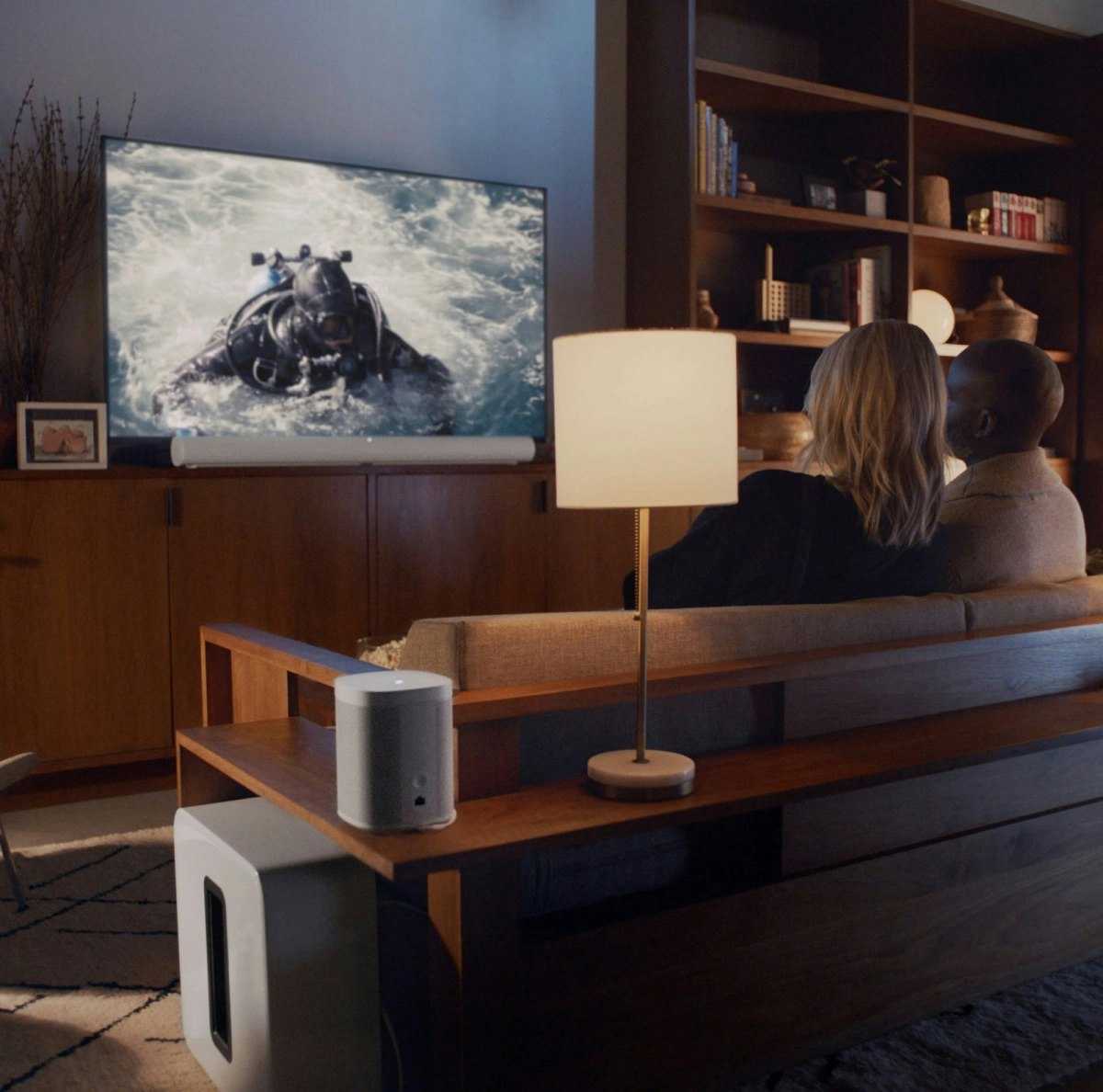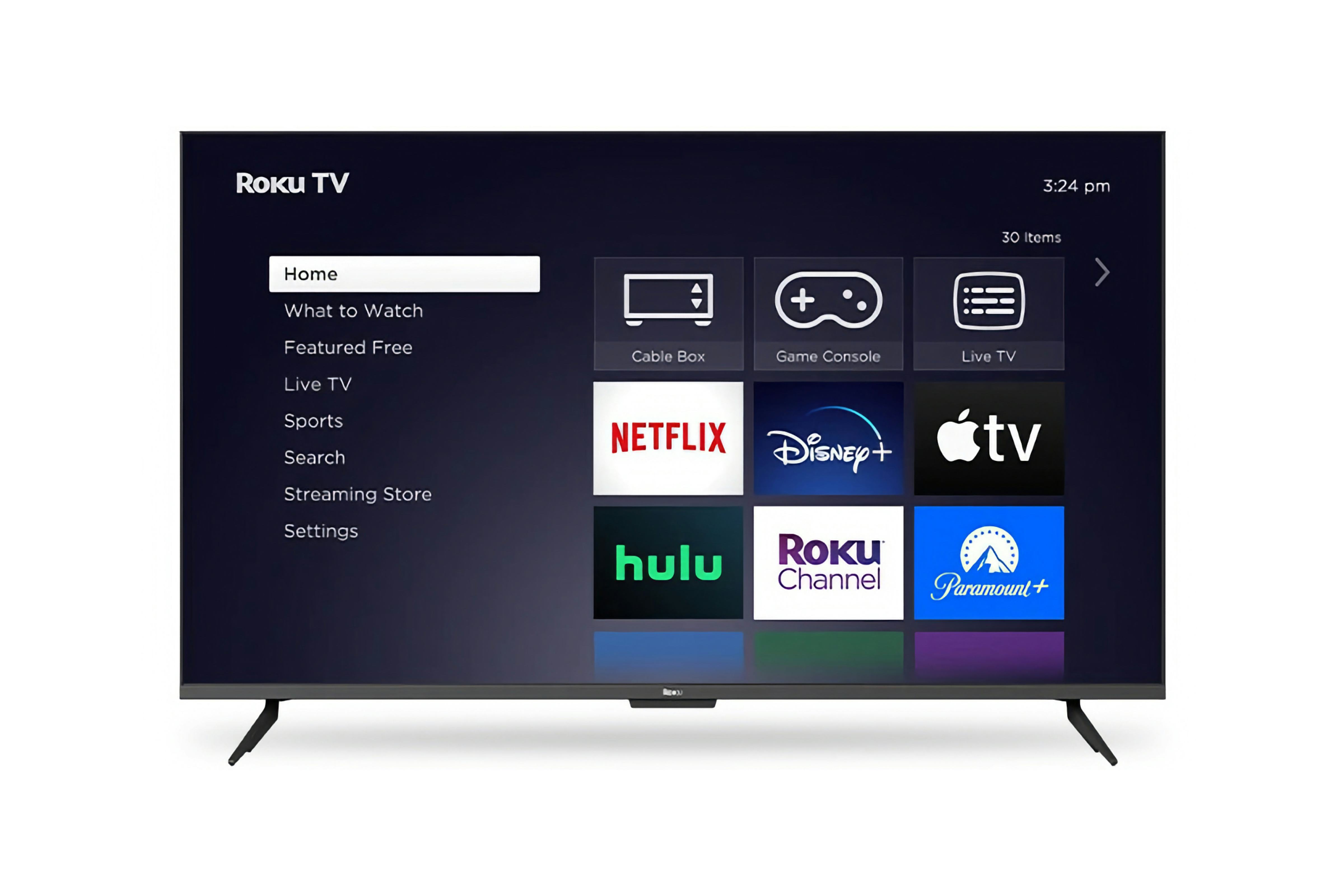
As of Sonos’ fourth quarter earnings, CEO Patrick Spence was teasing the company’s entrance into an entirely new product category in 2024. Sonos is known for its speakers, but due to less-than-stellar performance in 2023 and a major loss to Google in a battle over speaker software, the company is looking to branch out.
So far, the expectation is Sonos’ next product is headphones. AirPods are estimated to be at least a billion-dollar business for Apple — up until this point the closest Sonos has come to “personal” audio is the Roam, a portable speaker that works over Bluetooth or Wi-Fi. It makes sense to try headphones.
But there’s a real opportunity for something bigger. Something outside of the company’s audio comfort zone: TVs.
A new home theater operating system

Sonos creates expensive, expertly designed speakers connected by a wireless platform that makes it easy to group devices, control playback, and fling sound all over your house from a simple app. The company has so far had a conservative presence in the home theater space. The Sonos Beam, Arc, and Ray are solid soundbars that you can fill out with the company’s other speakers. Voice assistant capabilities make them smarter than most, sure, but they’re not exactly plays for dominance in the living room.
In 2022, reports pointed to the development of a “Next-Generation Home Theater OS” at Sonos. There were few details to go on, but the company was hiring people with experience working across platforms like TV, tablets, and smartphones and a familiarity doing business development in “streaming media-related fields.” One imagines what those Sonos employees were working on could be a nice fit for a TV or at least an app given Sonos’ interest in offering subscription services to customers, too.
Rumblings about a new operating system reflect what seems like a growing interest in more actively controlling how customers interact with their products. Sonos Voice Control, the company’s custom voice assistant voiced by Breaking Bad’s Giancarlo Esposito, might have come about because the company’s rift with Google meant Google Assistant was off the table, but it’s also an example of a custom, flexible control experience Sonos created for customers. One that could translate to other types of products down the line.
Focus and simplicity

The appeal of a Sonos TV is the same appeal that made some financial analysts dedicate their entire career to speculating about Apple’s entrance into the TV business. Sonos has the same high standards, attention to detail, and general sense of focus and simplicity that Apple does. Apple is a production company, studio, and streaming service provider in a way Sonos will never be, so the fantasy of the Sonos TV is about realizing what could have been. Basically, Sonos feels like our last chance for a TV that isn’t bogged down by surveillance capitalism, ads, and cumbersome interfaces, mainly because it does seem like it's in the company’s DNA.
And in some sense, there’s never been a better time to make a big screen. The process for manufacturing OLED panels is maturing and dropping in price. The state of home theater interfaces has never been worse, whether you’re living in Roku City or dealing with Google’s unfortunately slow streaming solution, leaving room for a Sonos alternative. And the thing that’s been true since the beginning holds: a TV that can connect to your existing speaker system in as simple a way as possible would be a blessing.
There’s more than one multi-billion-dollar category
Spence said that in 2024 Sonos would enter “into a new multi-billion dollar category in the second half of the year that will complement [the company’s] current offering.” Headphones fit that description, and according to Bloomberg, Sonos has an internal team working on them.
But let the record show, televisions fit that description, too. And given Sonos’ promise to enter into four new product categories last year, who’s to say a high-quality OLED display with a streamlined operating system couldn’t come next?







